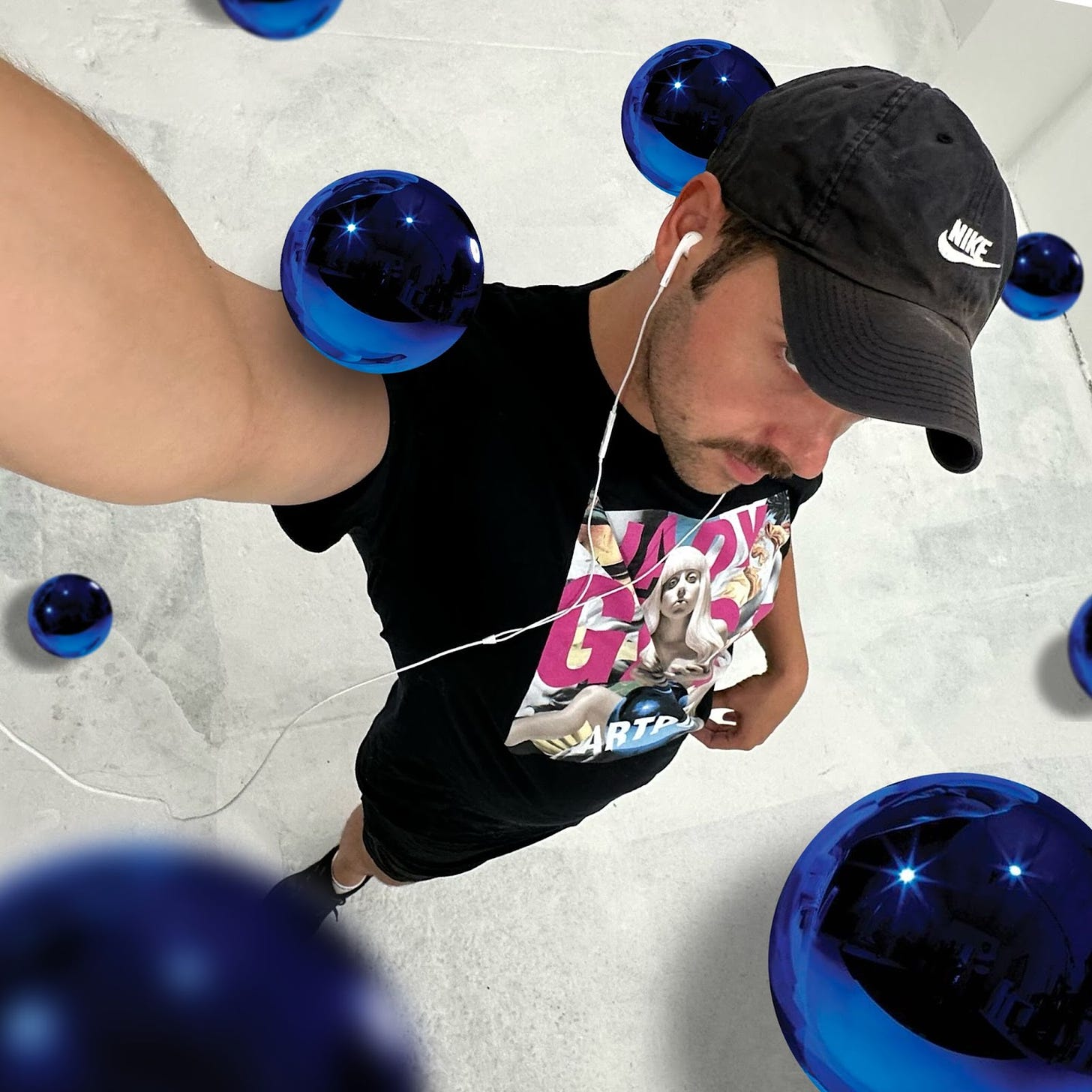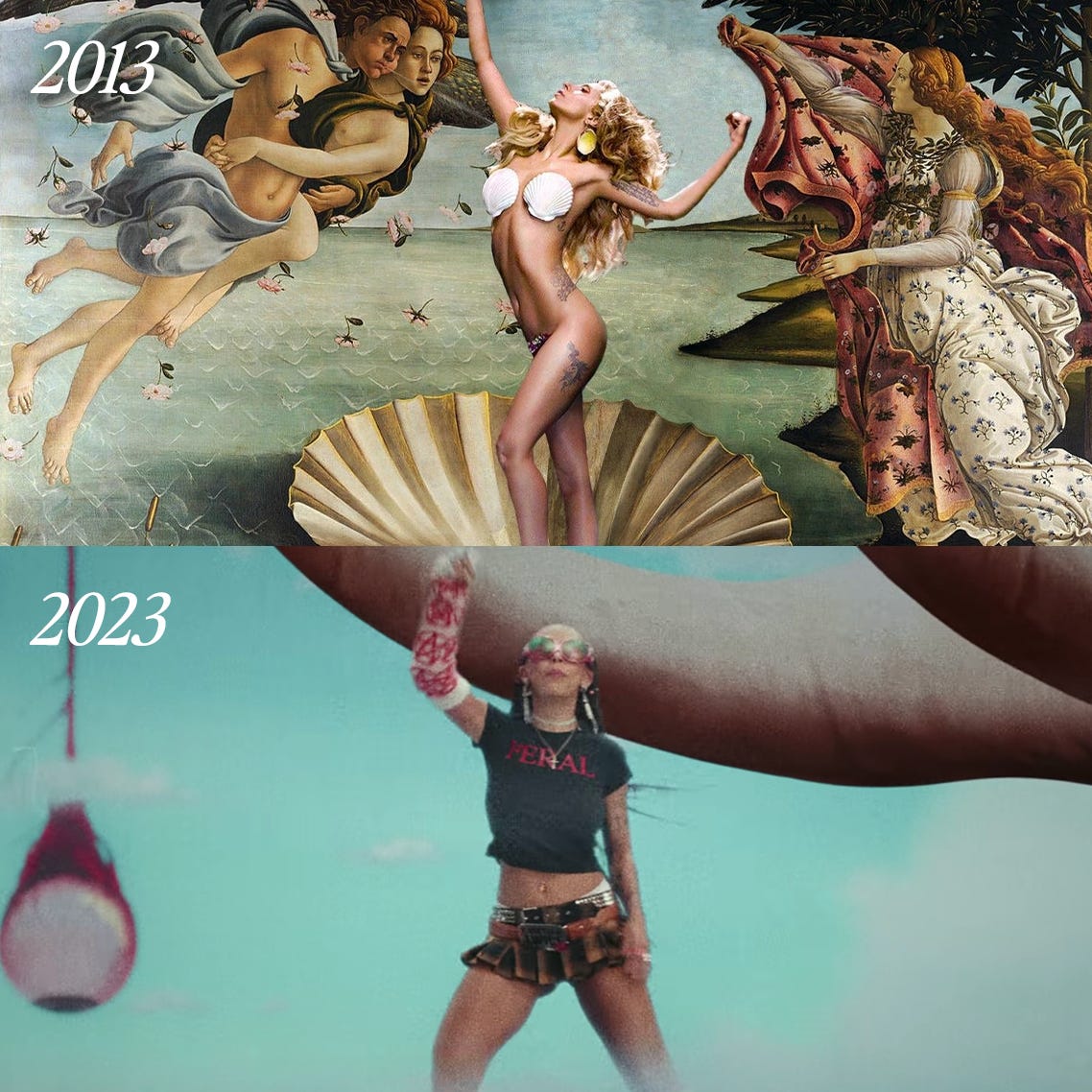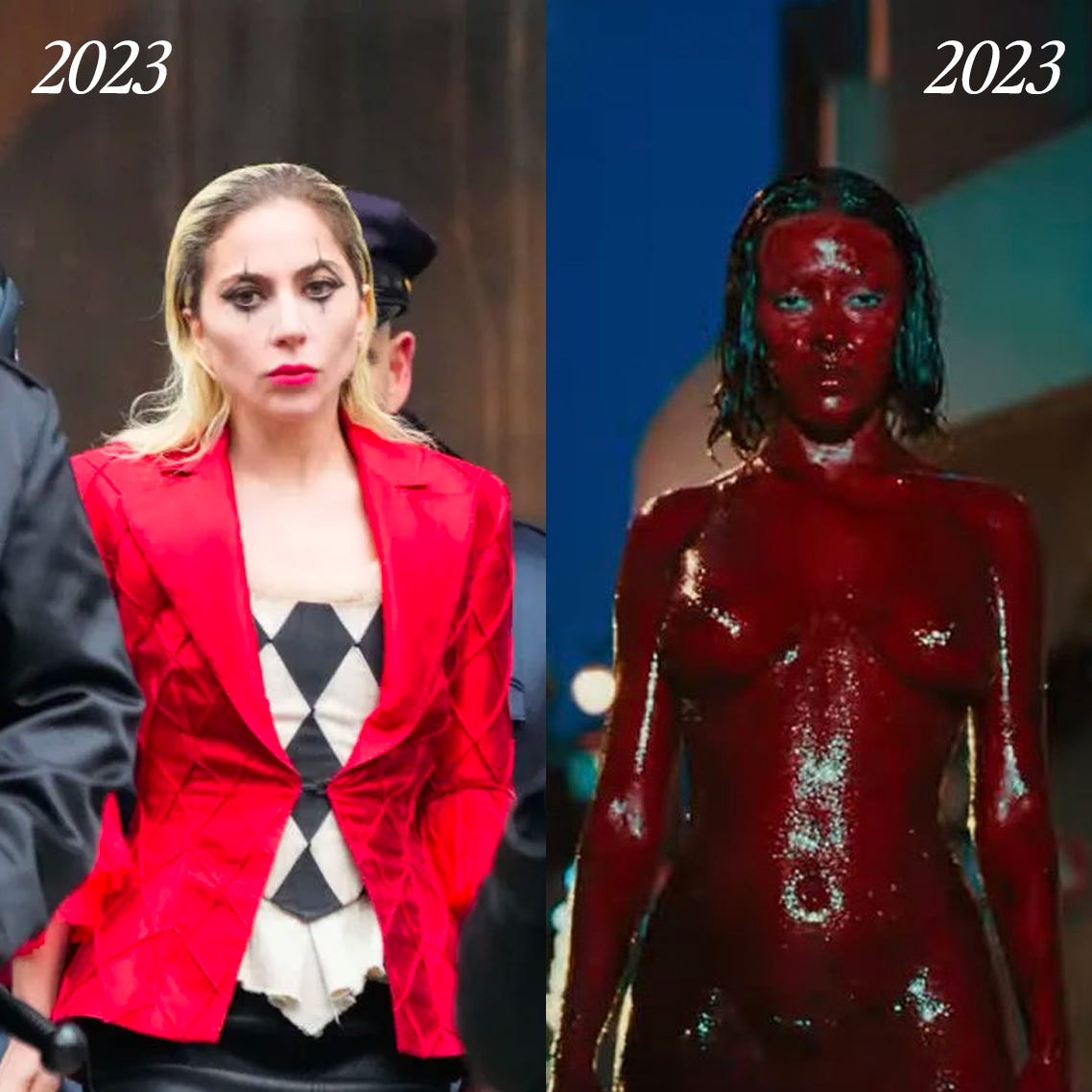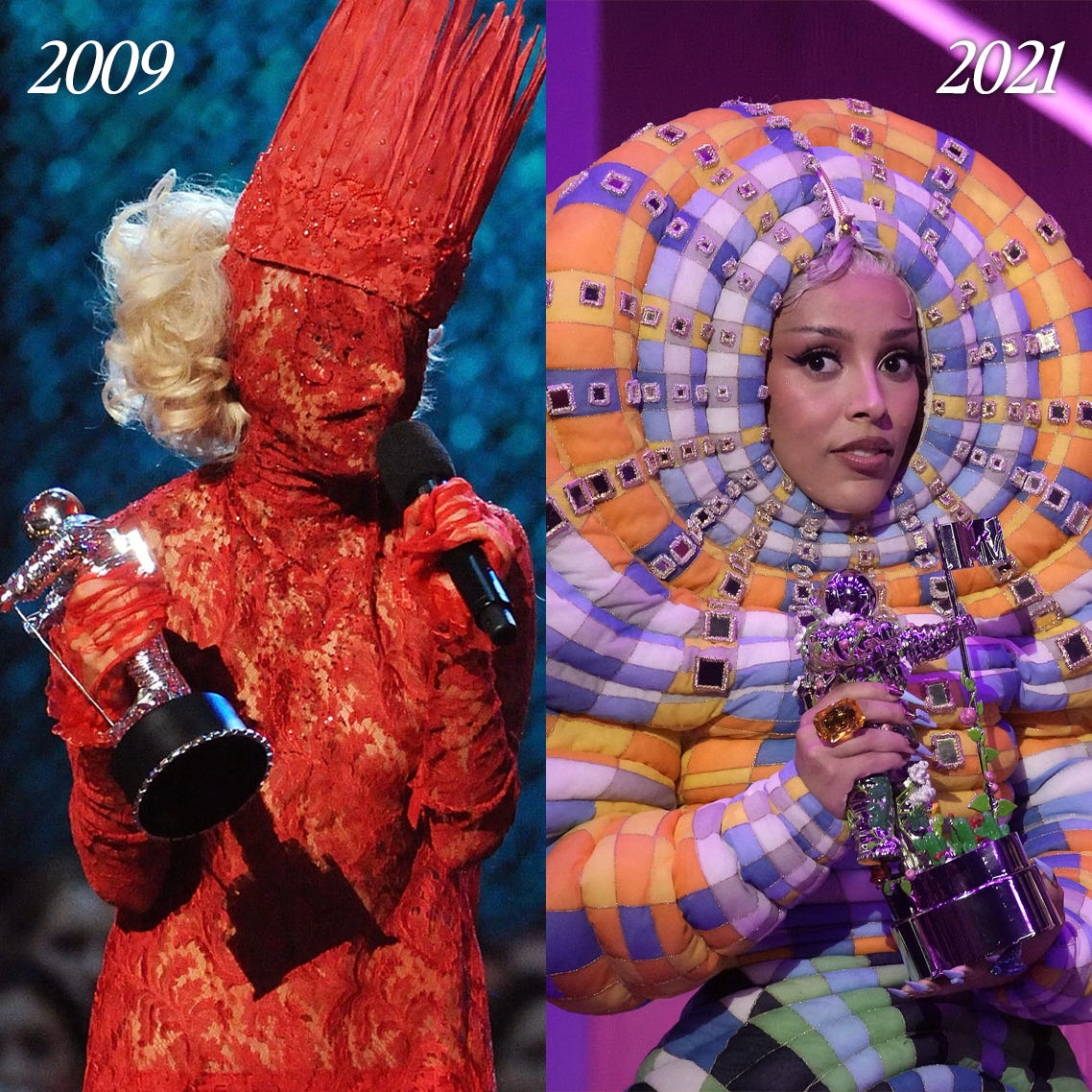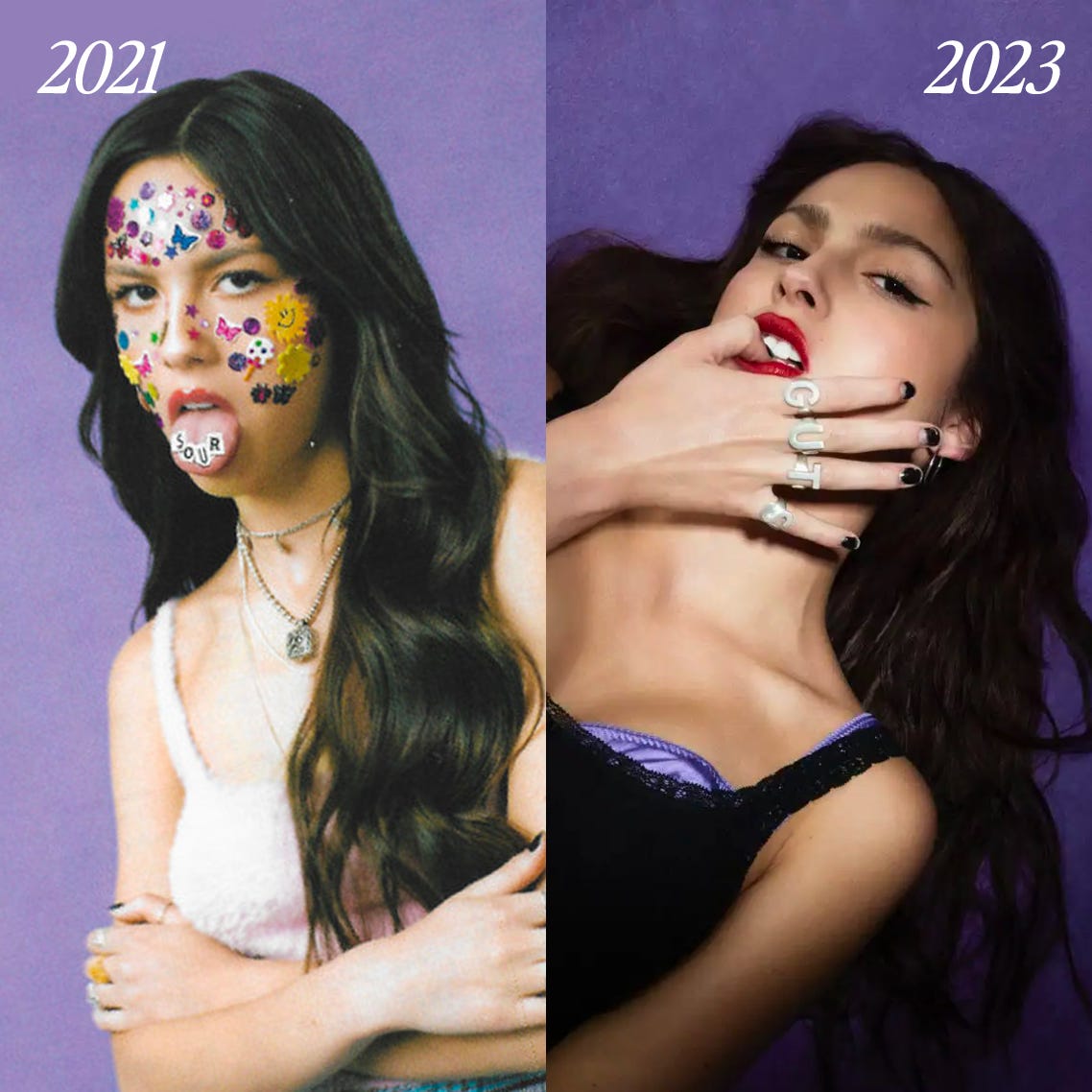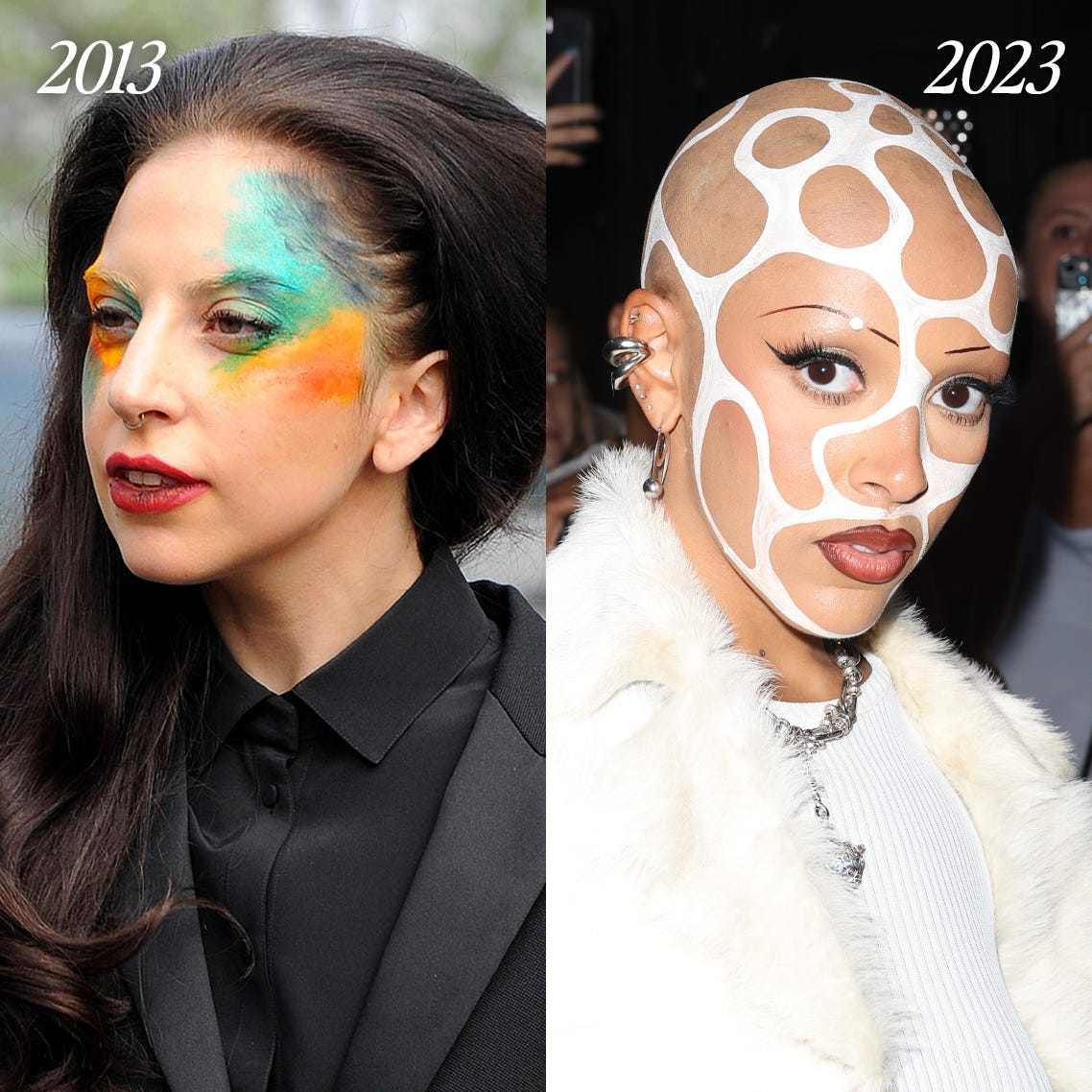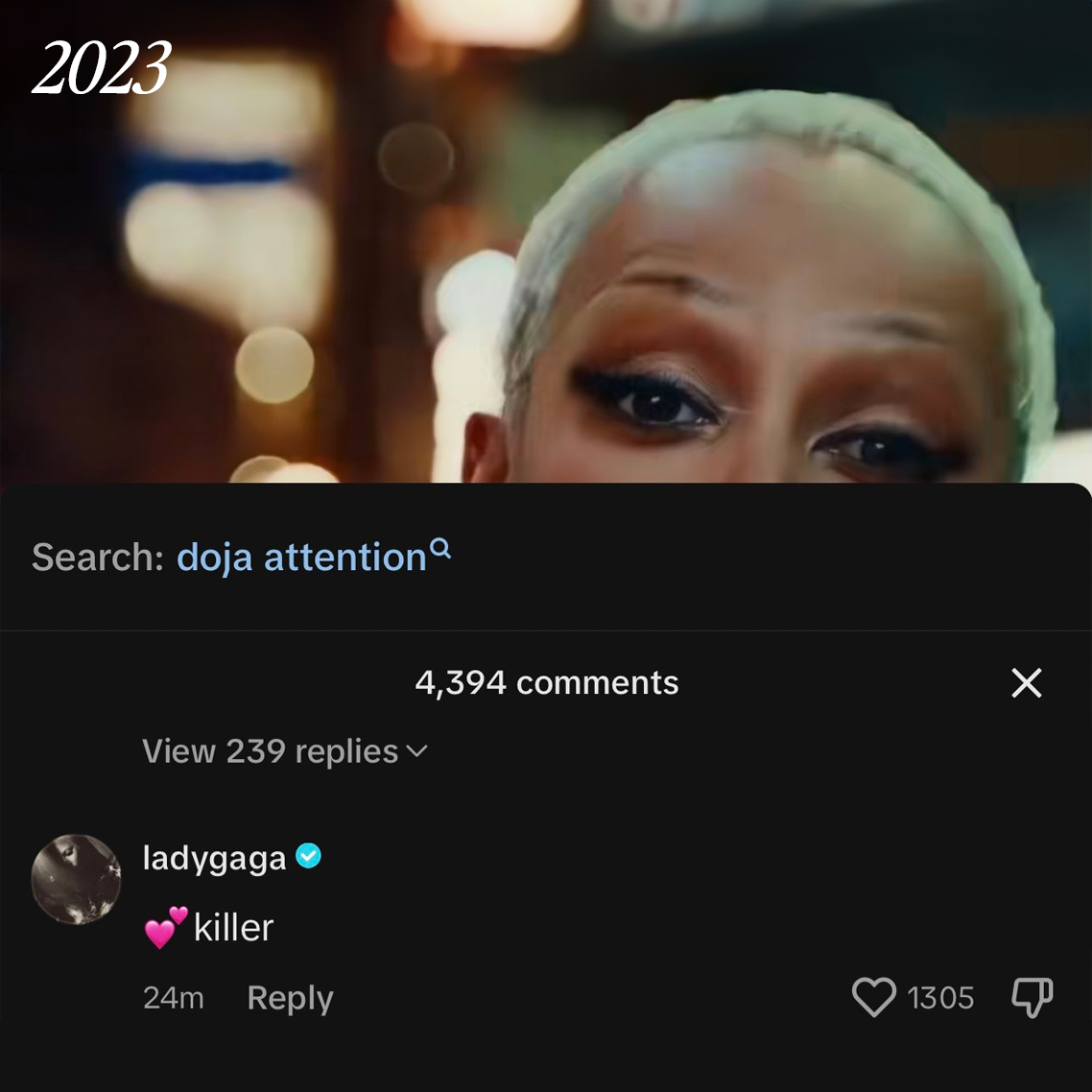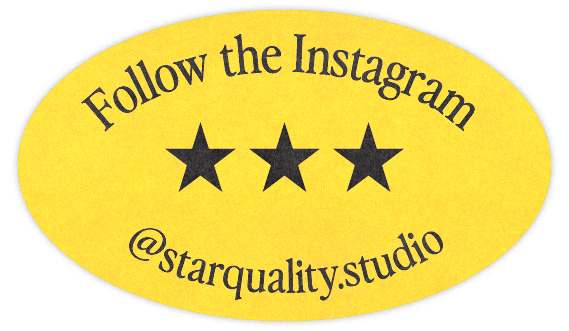★ #19 • bracing for doja cat’s ‘ARTPOP’
when it comes to self-expression, the customer isn’t always right...
First Of All, the fact that nobody asked for this Substack to exist, but here you are, is truly incredible to me. The fact that I can spend an entire summer in silence and it goes unnoticed, perhaps even celebrated, by your inboxes is amazing! That said, I’m back again with a dispatch that not one single person asked for me to write.
This time, it’s to argue the case to you (or maybe to myself) that Doja Cat’s recent backlash and provocative, defensive album rollout proves that she is on a trajectory to become one of her generation’s greatest pop artists. In the tradition of Lady Gaga’s ‘ARTPOP’ era, Doja Cat is laying an important foundation for her career and legacy by betting all of her money on authentic self-expression instead of optimizing her artistic output for mass consumption.
As someone who acquired official ‘ARTPOP’ merchandise as recently as two weeks ago as well as someone in possession of tickets to Doja Cat’s upcoming stadium tour, I feel uniquely qualified to guide you through this exploration of their two approaches to stardom. It’s no secret that I’m a Little Monster® in the pathological sense. Since the day I saw my prom date perform a cheer routine to ‘Just Dance,’ I’ve been captivated by Stefani Angelina Joanne Germanotta and her steadfast devotion to celebrating the unorthodox and committing her full Italian self to the bit. Four years post-prom, Lady Gaga’s third studio album ‘ARTPOP,’ which is approaching its tenth anniversary this November, debuted and ushered in the concept of a pop star’s “flop era.” Even I must admit that the phrase “artflop” has a certain je ne sais quoi to it. That following spring, I sat in my college apartment in Austin, Texas with my eyes glued to a livestream of Lady Gaga delivering the 2014 SXSW’s keynote speech just a few blocks south of me.
Two days before her keynote address, Lady Gaga had descended on a stage at Austin’s Stubb’s Bar-B-Q venue to perform a medley of ‘ARTPOP’ songs backed by a now infamous Doritos “For the Bold” sponsorship. Among the songs she performed that night was ‘Swine,’ a jarring EDM track about a traumatic sexual assault that she experienced at the hands of a former record producer. The performance included controversial moments like seeing her spit roasted like a pig and vomited on by the performance artist Millie Brown (not to be confused with Millie Bobby Brown). The keynote’s moderator grilled her on that week’s headlines, notably on whether or not she felt like a sellout by letting Doritos brand her avant-garde performance. She claimed that the partnership allowed her the financial freedom to express herself in a way that her record label refused. She declared “I will retire from the commercial market if I have to be something other than myself” before encouraging other artists “don't sell out, sell in.”
As our finest Little Monster® scholars will remember, this was also at a time in Lady Gaga’s career when her longtime manager dropped her and she chose to personally finance the visuals for her ‘G.U.Y.’ music video because of ongoing creative differences with her label. As a fan I was completely riveted by both the drama and the creative output. ‘G.U.Y.’ is still one of my top Lady Gaga tracks and my favorite of her music videos to this day. In spite of her pushing the boundaries of her art, the “flop” narrative emerged because her sales numbers didn’t compare to her past efforts. Of course, the narrative overlooked the nuance: her earlier record-breaking sales were released when people still bought physical album copies, while 'ARTPOP' debuted in the era of streaming, which had forever changed listening habits but wasn't yet fully accounted for in Billboard chart figures.
Fast forward to this week’s release of ‘Paint the Town Red’ by Doja Cat. I found myself transfixed by the visual direction for the song’s music video, the defiance of its lyrics and the catchiness of its sound. While Lady Gaga had pumped her pop music into the traditional art world, Doja Cat’s current album cycle introduces her conventional art to the pop music world. Both of these eras are marked by a visible human brushstroke and signal the artist’s intent to be seen outside of the pop machine’s polished productions. I raced to Tw–, I mean, X, to see what Stan Twitter was saying. It only took one 0.047s search to find an infinite chorus of people decrying “RATIO!!!!” on Doja Cat’s music video announcement. The diagnosis was clear: artflop on arrival.
But where could Doja Cat’s latest music video have gone so wrong to deserve a complete social media ratio? Baby, it was Born This Way! Last Summer, Doja Cat was attacked online by upset fans for choosing to not take selfies with them outside of her hotel after her festival performance in South America was canceled because of inclement weather. Their entitlement pushed Doja Cat to a breaking point where she claimed that she would soon be quitting music. It’s since been a turbulent year as she charted her comeback while simultaneously squaring off with the fans that built her name while demanding her obedience. This reached a boiling point a few weeks ago when she declared that fans that call themselves “Kittenz” (see also: her Little Monsters®) should “delete their entire account and rethink everything.” Since denouncing her most diehard fans, Doja Cat has lost over 400,000 followers on Instagram alone.
It’s interesting that Lady Gaga’s self described “creative rebellion” was against her label who wouldn’t finance the controversial performance art pieces that defined her ‘ARTPOP’ era whereas Doja Cat’s rebellion is against the digital masses that put her on the map with her countless trending TikTok tracks. In today’s media landscape, most pop stars are only able to break through and become household names after a stroke of algorithmic luck earns them an initial audience and proves their viability to record labels. Lady Gaga’s early career took off at the dawn of social media when the power still remained in the hands of the music executives that had direct influence over mass media marketing channels. Whether it is in opposition to their executives or their followers, Lady Gaga and Doja Cat have both affirmed their artistic integrity by resisting the powers that directly finance and, therefore, attempt to control their artistic efforts for personal gain.
The idea that being vomited on and spit roasted like a pig while singing about a traumatic life event is at all brand friendly makes it even funnier that Lady Gaga was deemed a sell out for her Doritos-sponsored SXSW performance. Hindsight makes it even more dubious when artists are now even more dependent on corporate partnerships because of the fractions of a penny they make per stream. For Doja Cat, the idea that she has to maintain the parasocial charade that one’s favorite artist both intimately knows and subsequently loves their fans is equally out of step with her lived reality. Both Lady Gaga and Doja Cat reached a ubiquitous level of fame in their respective cultural moments and both artists bit the hands that fed them when they felt pressured to be controlled. By refusing to feed the beast, both artists might take hits to their reputation and revenue, but in doing so, they gain more credibility and agency over their art.
In 2010, Pitchfork writer Tom Ewing wrote about how a few select artists embark on an “Imperial Phase” where they completely own the pop cultural moment. At the time of his writing, Lady Gaga’s ‘Telephone’ had just taken the world by storm. Since then, we’ve seen these same Imperial Phases in Taylor Swift’s ‘1989’ and Ariana Grande’s ‘Sweetener’ and Billie Eilish’s ‘When We All Fall Asleep, Where Do We Go?’ and, yes, Doja Cat’s ‘Planet Her’ album. The thing about an Imperial Phase, Ewing argues, is that artists may have a period of total dominance and influence but it always comes to an end. What goes up must come down. The mid-career album, like ‘ARTPOP’ or Doja Cat’s next effort, is a pivotal point in a pop artist’s career to reset expectations for how they can be perceived beyond their earliest persona forged along the rise to the top.
In contrast to Lady Gaga and Doja Cat, one can look to Katy Perry as an artist with a clear Imperial Phase that saw her cultural cachet collapse. Released in 2017, her album ‘Witness’ lacked a clear artistic point of view. She bounced from ‘purposeful pop’ in protest of Donald Trump to a meme-filled music video with Nicki Minaj before rounding it out with her own take on “performance art” while serving her head on a platter. Let’s not forget that this was three years after the media pitted Katy Perry and Lady Gaga against one another and panned her ‘ARTPOP’ collaborations with art titans like Robert Wilson that were exhibited in the Louvre. Overall, Katy Perry’s album sank under a tidal wave of perceived marketability and her star dimmed in the public imagination as a result. It wasn’t a question of love it or hate it, slay era or flop era — it was even worse: no one knew what to make of it.
Olivia Rodrigo is a great example of a pop artist in the center of her Imperial Phase. Following her transition from Disney prodigy to Grammy award-winning singer-songwriter ingénue, Olivia Rodrigo’s teen angst persona has essentially stayed the same between her first release ‘Sour’ and her upcoming album ‘Guts’. Her new album even recycles the same Lavender color palette from her record-breaking first album. While I have no doubt that ‘Guts’ will be successful algorithmically, I also can’t help but feel cynical that she and her creative team are lost in a corporate brand expansion complete with a signature brand color palette. While consistency is great for building a brand, it doesn’t always bode well for creating interesting, memorable art. That said, her Petra Collins directed music video for ‘Vampire’ has me hyped for what’s to come as she continues to evolve beyond the purple soft girl mood board that made her name.
Doja Cat, on the other hand, has strayed far from the artistic sensibilities that made her a hit machine. Her first two albums “Hot Pink” and “Planet Her,” which she recently called “cash grabs,” saw her diving into tried and true pop star territory. Pink wigs, starry guest features and expensive alien universes catapulted her to the status of pop mainstay, yet her most recent singles have seen her directly subvert those expectations with lyrics like “you follow me, but you don't really care about the music” in ‘Attention’ and “I don't need to wear a wig to make you like it” in ‘Paint the Town Red.’ The visual style of her latest music video is also noteworthy in the way that it relies on her very own paintings as its setting and lo-fi, stage-like prop and costume styling that give the video a handmade feel. Unlike her last era’s high budget galactic CGI, the artist is viscerally present and in control this time around.
The implications of this Doja Cat era are that she has broken free from the expectations for pop stars to constantly shape shift to appeal to the mass market’s whims and that she is not here to be a parasocial bestie to her fans. In the title track of ‘ARTPOP,’ Lady Gaga sings that she “just loves the music not the bling” and aimed for her pop music to be seen as fine art. Doja Cat raps “you follow me, but you don't really care about the music” in her lead single ‘Attention.’ At a pivotal moment in both of their careers, they ask to not be seen as products to consume but instead artists to appreciate. “Art,” according to Google, can be defined as “works to be appreciated primarily for their beauty or emotional power.” From my vantage point, the emotional power that stems from Lady Gaga’s and Doja Cat’s misunderstood projects is grounded in their flaws. It's in feeling their resistance to passive consumerism while creating challenging art that exists in the face of financial growth at all costs.
Both ‘ARTPOP’ and Doja Cat’s upcoming album will have been made in reaction to what it means to be liked by everyone and what it means to make work for one’s self. In the decade since ‘ARTPOP,’ it’s exciting to see an artist like Doja Cat willing to risk it all to be exactly that — an artist. By fanning the flames of backlash and calling out fans with arguably unhealthy attachments, Doja Cat is showing that she’s aware of her own power as much as her own purpose and that in itself gives her the credibility to continue creating music and art that will hold our attention for many eras to come. She is pruning out casual observers by staying authentic to her creative vision instead of answering a creative brief written by fair weather fans.
To be totally honest, I almost didn’t publish this Substack post. I got super nerdy and excited about the idea that Doja Cat is this generation’s Lady Gaga but then fear took over that, like, this whole piece is insane and, once again, no one asked for this — that it all only made sense in my head and maybe it should stay there. But, if you made it this far, wasn’t that the whole point?





